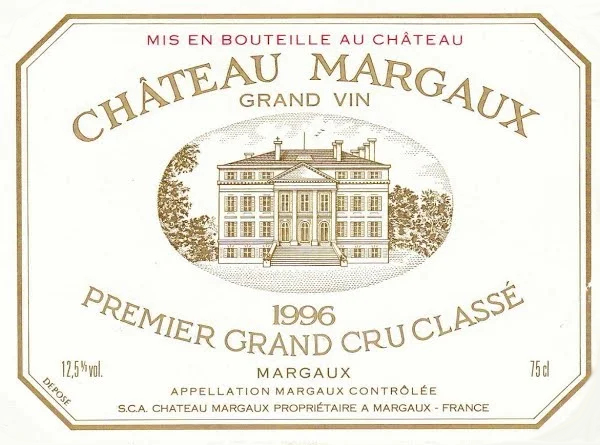Château Margaux 2013
Review of the Estate
Château Margaux is known for producing some of the silkiest, most aromatic wines in Bordeaux and it has been famous for doing so for centuries. The origins of the estate may be traced back to the 15th century when the Lestonnac family took over a grain growing property known as Lamothe (deriving from la motte - meaning a small rise in the land, or hill). The agricultural change from cereal crops to vines was led by Pierre de Lestonnac from 1572 to 1582. Further developments occurred when, over a century later, Chateau Margaux estate manager, Monsieur Berlon, saw the benefits of vinifying red and white grapes separately. This change was what set Chateau Margaux firmly on the path to modern vinification practices and international renown.
This reputation spread over the next several hundred years. Sir Robert Walpole, the English Prime Minister in the early 18th Century, declared himself an avid supporter of Chateau Margaux and was known to purchase four casks every three months! When the Marquis de la Colonilla purchased the estate in the early 19th century, the outstanding reputation of Chateua Margaux's wines demanded an impressive chateau to match. Built in 1810 by Louis Combes, the current chateau is a unique example of the neo-classical style. With its structured facade, balanced by ionic columns, it exudes a refined elegance not dissimilar to that of the wines produced within. Chateau Margaux was officially recognised as an historic monument in 1946.
Today Chateau Margaux is owned by Corinne Mentzelopoulos. Her father, Andrè, purchased the estate in 1977 and invested significantly in the regeneration of the vineyard and winery by installing new drainage systems, replanting vines, creating a new underground cellar and investing in new oak barrels. The result of these improvements is evident in the spectacular and consistent vintages produced by Chateau Margaux since the 1978 vintage. This has allowed Chateau Margaux to remain a dominant force in a highly competitive market and maintain its preeminent global reputation.

Vineyard
Surface area: 192.7 acres
Grape Varieties: 75% Cabernet Sauvignon, 20% Merlot, 5% Cabernet Franc and Petit Verdot
Average age of vines: 35 years
Density of plantation: 10,00 vines per hectare
Average yields: 45 hectoliters per hectare
Average cases produced: 16,500 per year
Plateau of maturity: 9 - 35 years
Château Margaux 2013 Reviews / Tasting Notes
Neal Martin - The Wine Advocate
Point Score: 91
The 2013 Chateau Margaux has an attractive bouquet that compared to fellow recent vintages appears earthy in style (as it appeared in barrel), offering a mixture of black and red fruit, bay leaf and cedar. The Cabernet Sauvignon comes through strongly - no surprise given that there is 97% of the final blend! The palate is medium-bodied with fine tannin and a pleasing seam of acidity. It is not the greatest Chateau Margaux that the late Paul Pontallier ever made, but it is commendable for the vintage and there is a sense of harmony and composure towards the finish with hints of black pepper and mint lingering on the aftertaste. Enjoy this over the next 15 years, though I am not sure it has the substance to warrant maturation for a longer period.
Wine Spectator
Point Score: 91
This is velvety and suave, with alluring fresh plum, sleek cassis and warmed raspberry coulis flavors that are nicely melded together, picking up rooibos tea, singed sandalwood and mineral accents through the lovely finish. Refined and approachable already, but has enough range and length for cellaring. A wine of style.
Point Score: 94
A firm and tight Margaux with structure and elegance. Full bodied and tight. Lovely silky tannins and layers of texture and flavor. Currant and chocolate undertones. 94% cabernet sauvignon, the rest cabernet franc and petit verdot. Drink in 2018.